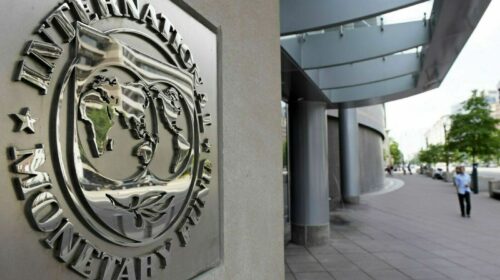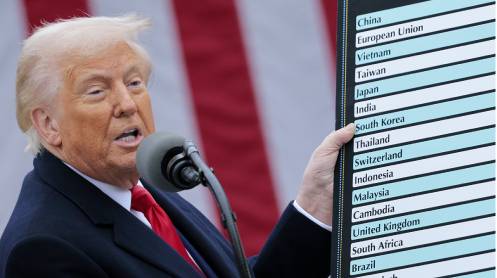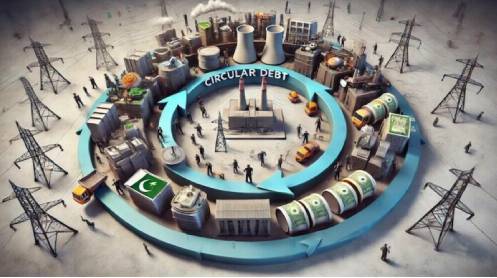he government has assured the International Monetary Fund (IMF) that it will continue adjustments in power tariffs for domestic consumers sans protected slabs and also rationalize subsidy plan for tubewells for large agricultural users by November 2022.
This commitment has been given to the Fund under the Seventh and Eighth Review of the extended arrangement under the Extended Fund Facility.
According to the Fund, the authorities have reaffirmed that it is the only spending authority in the country to grant power subsidies, which it will limit to Rs 570billion thanks to: (i) power tariff adjustments reducing the tariff differential subsidy (TDS) to Rs 225 billion; and (ii) lower remaining IPP/GPP payments (Rs 130 billion).
The CD stock stood at Rs 2.253 trillion (3.4 percent of GDP) at end-June 2022 and a decrease of Rs 27 billion during FY22 including Rs 800 billion held by PHPL as CD stock payments from the budget (PRs 564 billion) overcompensated a record CD flow of Rs 536 billion.
This allowed for: (i) servicing the PHPL debt (Rs 130 billion); (ii) repaying arrears to independent and government power producers (IPPs and GPPs) in return for revised purchasing power agreements (Rs 384 billion); and (iii) repaying arrears to other IPPs (Rs 50 billion).
The CD flow was thus much higher than envisaged under the updated and IFI-supported Circular Debt Management Plan (CDMP) adopted by cabinet in March 2022, missing by more than threefold the related end June 2022 IT under the EFF program.
The Fund has acknowledged that acute cash flow strains have resulted in substantial power outages (load shedding) in recent months. The government has given its word to the Fund that it will reduce utilities consumption by 10 per cent.
Notwithstanding efforts in recent years, financial conditions in the energy sector have worsened—with arrears accumulating, cash constraints biting, and load shedding increasing— and thus the implicit cost to the budget, and the economy more generally, are unsustainably high.
The IMF maintains that restructuring the energy sector requires accelerating the reform efforts. This is particularly important as recovery costs are poised to continue to increase in the near term, driven by new generation capacity coming on stream, high international commodity prices, and the recent rupee depreciation. While some recent measures (including the renegotiation of IPP contracts) will somewhat help contain rising arrears, making a dent requires steadfast implementation of a comprehensive, socially-balanced reform strategy.
The authorities are in the process of updating the CDMP for FY23 regarding its underlying assumptions and reform progress (supported by the World Bank, the Asian Development Bank, and the IMF staff). This will help guide an ambitious and sustained decline in the CD accumulation. Persisting with monthly monitoring reports and efforts to strengthen CD projection capacity will further help.
Power quarterly adjustment: Record high
After finally receiving all needed inputs the independent regulator, NEPRA, has recently determined the overdue: (i) quarterly tariff adjustments (QTAs) for FY22 Q1 and Q2 (together Rs 2.12/kWh for three months); (ii) Annual Rebasings (ARs) for FY22 and FY23 Rs 7.91/kWh); and (iii) the tariff structure for the second step of the subsidy reform for residential consumers (removing the previous slab benefit and adding a markup of Rs 0.54/kWh to unprotected slabs).
While the QTAs — in line with the 2021 NEPRA Act Amendments — were automatically notified by Nepra, the government notified the other adjustments in several stages in July 2022: (a) the subsidy markup from July 5, and two rounds of AR (of PRs 3.50/kWh each) from July 25 and August 1 (PA); and (b) the remaining AR of Rs 0.91/kWh from October 1 (new end September 2022 SBs).
Cumulatively, these AR steps will likely increase the weighted average power price in October 2022 by only about 10 percent over its end-December 2021 level, as they reduce the need for corrective ex-post recovery through monthly fuel price adjustments (FPAs) and QTAs, which have been at record levels during recent months. In addition, not applying the AR to the slabs for the smaller consumers will further cushion the impact on the vulnerable.
The IMF Staff stressed that regular tariff adjustments in line with established formulas are critical to implement the CDMP and limit fiscal pressures, halt the arrears accumulation, lend credibility to Nepra, limit load shedding, and restore the viability of generators and ensure their ability to operate.
The authorities concur that subsidy reform needs to continue to effectively protect the vulnerable, introduce more fairness, and reduce fiscal costs. The IMF Staff commended the authorities for committing to: (i) entering the third stage of their multi-year subsidy reform plan, supported by the World Bank, and submit to cabinet a subsidy rationalization reform plan for tube-wells for large agricultural users by November 2022; and (ii) persevere with regular tariff adjustments while sparing the protected slabs, which will increase the progressivity of the tariff structure for residential consumers and improve fairness.
The authorities set aside Rs 180 billion to settle IPP/GPP arrears with the aim of unlocking lower capacity charges including through renegotiated PPPs, and PRs 30 billion to continue to amortize PHPL debt during FY23. Work also continues with the World Bank and the ADB to: (i) reduce commercial and technical losses (including by introducing smart metering, cutting off delinquent consumers, and scaling up the transmission and distribution infrastructure to be at par with generation capacity); (ii) improve DISCO governance and accountability, introduce private participation, and progress with their phased privatization; (iii) introduce competition; (iv) actively seek similar PPA renegotiations with other groups of power producers; and (v) implement the recently approved National Electricity Policy, 2021.
The authorities also agreed to only gradually absorb maturing publicly-guaranteed PHPL debt into cheaper central government debt if fiscal space allows and use proceeds to reduce the CD stock (including privatization proceeds from power sector assets and recoveries from the outstanding stock of receivables). The authorities informed the Fund that they have resumed the process of aligning power tariffs with recovery levels in line with established formulas.
The authorities have also assured that in FY23, they will continue to renegotiate PPA terms in return for clearing unguaranteed CPPA-G arrears and settle up to Rs 180 billion earmarked for IPPs and GPPs with revised PPA terms, using the established contract structure.
The government has also pledged to Increase private participation in DISCOs to improve their governance and efficiency, seek Nepra’s approval of a Transmission System Expansion Plan (TSEP) that meets the requirements for an increased share of variable and cheaper renewable energy in the generation mix and seek Nepra’s approval of the updated Grid Code and Commercial Code to set the objectives, principles, rules, procedures, rights, and obligations that govern the trading in the new wholesale market, and thus to improve the efficiency in distribution.





